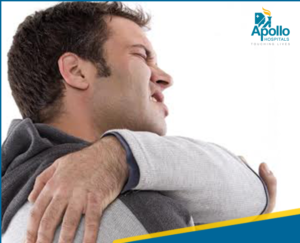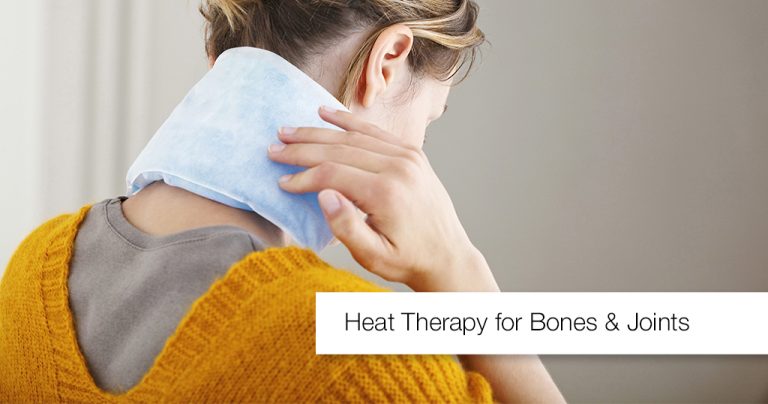If one suffers from arthritis, anything that can help ease the stiffness and pain in the bones and joints is a welcome relief. While doctors suggest both heat and cold therapies to deal with the pain, heat therapy is more popular. Here is more about using heat therapy for arthritis.
What is Heat Therapy?

Heat therapy is an effective way of dealing with the pain caused by arthritis. One of the biggest benefits of heat therapy is that it is an inexpensive method of treating this problem. In this method, heat is applied on the affected joints, which can help relieve swelling, stiffness, and pain caused by arthritis. The heat helps in relaxing the muscles and improves the blood flow in the joints and the muscles. The best time for this therapy is during the morning as it can help loosen up an osteoarthritic knee. Often, heat therapy is used in combination with cold therapy to make it more effective but can be used by itself as well.
How it Works
Heat therapy stimulates the healing force of the body. Heat therapy can be administered in various ways. One may use dry heat, like heating lamps or pads, or moist heat, like heated wash clothes or warm baths. Here is how heat therapy works:
- It dilates blood vessels in the body and stimulates blood circulation and the flow of nutrients and oxygen to the muscles. This helps reduce muscle spasms and helps repair damaged tissues.
- It also reduces the transmission of pain signals to the brain, thereby helping change the sensation of pain.
- The warmth helps improve joint flexibility as it enhances the pliability of the muscles and connective tissues.
Ideal Temperature and Duration for Heat Therapy
The main thing to ensure during heat therapy is that the temperature should be comfortable for the patient. It should neither be too low as then it would not be very effective, nor should it be too high, as then it may burn the skin. As for the duration, one needs to give it time to allow it to work. For the therapy to be effective, the heat should reach the affected muscles and tissues. If a session is too brief, it will end up only heating the skin. So, minor to moderate joint pains close to the skin would require 15-20 minutes of therapy, whereas deeper injuries in the lower back or hip would need at least 30 minutes.
How Often Should a Person Take Heat Therapy?
Moist heat packs used twice a day are said to be most effective. One may use them for 15 minutes before and after physical therapy. For an effective relief, a 5-10-minute heat massage should be applied to the affected area within the first 48 hours.
When Should a Person Refrain from Taking Heat Therapy?
There are a few circumstances where taking heat therapy is not suitable. Some of these circumstances are listed below:
- If the joint bruised or swollen
- If one is suffering from hypertension or heart problems
- If one is pregnant (they should especially avoid spas and hot tubs)
- If there is an open wound
- If the person has skin problems like dermatitis
- If the patient suffers from diabetes
- If one has deep vein thrombosis
- If the person has severe cognitive impairment
- If the person suffers from peripheral vascular disease
Different Ways of Applying Heat to the Joint
Listed below are nine common methods of applying heat to an arthritic joint for the best results:
- Hot Water Bottle
One of the most common methods is using a hot water bottle made of soft plastic or rubber. The water bottle is filled with hot water and applied on the joints. The water remains warm for up to 30 minutes.
- Heated Gel Packs
Available at convenience stores, these packs need to be heated in hot water or in a microwave. Gel packs remain warm for at least 30 minutes.
- Heat Patches
Heat patches are a very convenient option as they can be worn under the clothes with ease. These patches emit low-level heat for hours and are even available with pain-relieving ointments for better results.
- Electric Heating Pad
If the affected area is large, like the back or the hips, using an electric heating pad is the ideal option. They can be plugged in and kept on the joint for 20-25 minutes. Heating pads have the ability to maintain a constant heat level.
- Heated Dry Rice Pillow
A dry rice pillow is made with 100% cotton cloth and filled with dry white rice. The pillow has to be microwaved for 3 minutes after which it can be used for a 20-minute session.
- A Hot Bath, Sauna, or Hot Tub
These are options that stimulate a sense of relaxation and comfort. It can help reduce pain and loosen joints. At times when a hot bath is not possible you can also use a hot shower.
- Paraffin Bath
You need to plug it in to melt the paraffin wax. Once the wax has melted, you can dip your hands or feet in the bath several times till they are coated with the wax, then wrap them in a plastic bag for about 20 minutes to retain the heat. Before immersing your hands in the melted wax make sure to dip a finger and check the warmth. It should be warm and not scalding.
- Dry Sauna
Often used for relaxation, the dry sauna can also be a good option for heat therapy. It helps in reducing muscle tension, stiffness, and joint pain.
- Car Seat Warmer
A car seat warmer is a good choice for those who are suffering from arthritis in the back or hip. Using this method, one can apply gentle heat to the affected hips and spine.
If you are suffering from arthritis, then you should definitely give heat therapy a try. It is an inexpensive, easy, and convenient way of dealing with everyday arthritis pain. Heat therapy can be used in conjunction with other treatment options like cold therapy or physiotherapy. However, before trying it out for the first time, make sure that you consult with your doctor.


